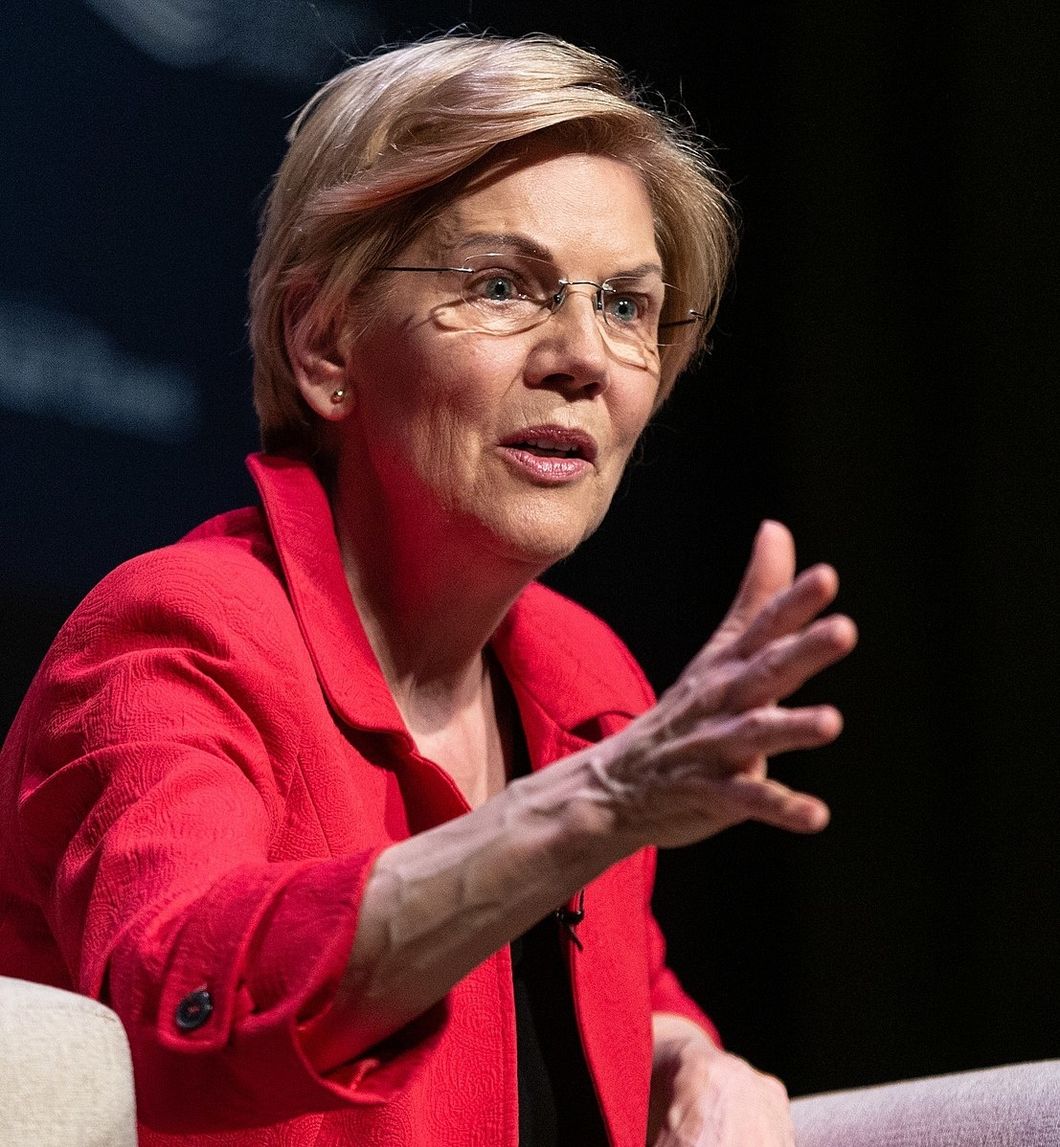Elizabeth Warren, Massachusetts senator and now 2020 presidential runner, has released a new proposal on policy for student debt. According to Warren, this new plan could help alleviate or eradicate student loans for 95% of student loan borrowers. The eligibility is pretty straight forward. According to Forbes, "...student loan borrowers with incomes under $100,000, the plan would forgive up to $50,000 in student loans." This means that a majority of borrowers will be able to instantly alleviate $50,000 of their loan, a price that would take roughly 10 years or longer to pay off.
Ten years of debt will instantly be lifted off a borrower's shoulders.
For those with higher incomes, there is less to be distributed, and rightly so. Although, the forgiveness amount only lowers in increments of $10,000 as you go. For those earning over $250,000, there is no longer loan forgiveness.
With details and facts aside, let's discuss what this plan means: Under Warren's presidency, students, young adults, and adults will be able to progress financially in life at a much quicker pace. This plan could blow away the storm-cloud that is student loans. Many of us have experienced the pressure of them since entering the realm of higher education. This is a life where further education is not only cheaper but more accessible to all. For those that can't even afford to take out loans, Warren provides further proposals: free tuition. This idea has left a bitter taste in American's mouths since Bernie Sanders introduced it preluding the 2016 election.
However, Warren's plan can be feasible in the capitalist realm of economics.
According to Senator Warren's plan, the plan will be funded with a 2% tax raise on those who earn $50 million or more. There is also an additional tax of 1% tax on families who are worth $1 billion or more. According to Warren, this tax increase will only affect around 75,000 families. Breaking down the plan, the 2% tax increase applies after one makes $50 million. So, after someone makes $50 million, he or she would pay 2 cents for every dollar. The projection for this plan would generate $2.75 trillion after 10 years. This would cover her education plan with a remaining balance of $1.5 trillion.
The plan is feasible and would generate a surplus of funds for things like infrastructure, climate, and universal childcare.
Now, there are arguments from some that claim that this kind of plan is "theft" upon the upper one percent. Paraphrasing Warren, they need to understand that the upper one percent has progressed using things provided by the government. Things like public schools that they possibly attended and even roads they've driven on. It's great that people have either inherited or rightfully earned millions of dollars; however, they should help others who have helped pave their way through taxes. Simply meaning, they should have a higher responsibility to invest in the future of America due to their surplus of income. It makes sense, and it is feasible.
There is one downfall to the plan: It does not cover privatized loans.
Although, if Warren were to lower requirements on educational bankruptcy claims (which she has supported in the past), then it would be easier for borrowers to get loan forgiveness.
With all of this information in mind, the plan is overall a positive force for anybody existing in the entire middle class and below. This plan also ensures that there is a fair chance for access to education. Your socioeconomic class will no longer consider whether or not you can go to college with free tuition. There will still be millionaires, but eventually, the lower class will start to dwindle down due to an increased amount of opportunities.
For the families and parents drowning in student debt, there will be more money in their pockets. Young adults can live in more than studio apartments and eat more than ramen noodles. There are more opportunities for everyone now under Warren's plan.




 man running in forestPhoto by
man running in forestPhoto by 





 "I thought you knew what you signed up for."
"I thought you knew what you signed up for." man and woman in bathtub
Photo by
man and woman in bathtub
Photo by  four women sitting on black steel bench during daytime
Photo by
four women sitting on black steel bench during daytime
Photo by  Uber app ready to ride on a smartphone.
Photo by
Uber app ready to ride on a smartphone.
Photo by  woman in red tank top and blue denim shorts standing beside woman in black tank top
Photo by
woman in red tank top and blue denim shorts standing beside woman in black tank top
Photo by  blue marker on white printer paper
Photo by
blue marker on white printer paper
Photo by  welcome signage on focus photography
Photo by
welcome signage on focus photography
Photo by  woman in white and black striped long sleeve shirt lying on bed
Photo by
woman in white and black striped long sleeve shirt lying on bed
Photo by  pink pig coin bank on brown wooden table
Photo by
pink pig coin bank on brown wooden table
Photo by  person holding iPhone 6 turned on
Photo by
person holding iPhone 6 turned on
Photo by  person holding pencil near laptop computer
Photo by
person holding pencil near laptop computer
Photo by  person slicing vegetable
Photo by
person slicing vegetable
Photo by 
 woman covering mouth with sweater
Photo by
woman covering mouth with sweater
Photo by  person holding remote pointing at TV
Photo by
person holding remote pointing at TV
Photo by  a woman with her arms raised in a crowd of people
Photo by
a woman with her arms raised in a crowd of people
Photo by  "Shocked disbelief: '95% of the population is undateable?'"
"Shocked disbelief: '95% of the population is undateable?'"








